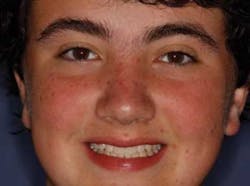Providing a predictable immediate denture, Part 2
Joseph J. Massad, DDS
For more on this topic, go to www.dentaleconomics.com and search using the following key words: immediate denture, prosthesis, reline, edentulous patient, Dr. Joe Massad.
Editor’s Note: Part 1 of this series can be viewed in the June issue of DE or online at www.dentistryiq.com.
Welcome back! Once we have completed and delivered our immediate denture, we go through a process of tissue and bone changes from the healing of the extraction sockets and remodeling of the overall boney contour. However, with today’s accuracy in our impression methods, these immediate dentures generally have excellent retention even though they may lack some stability issues depending on the number of teeth that have been extracted and the existing periodontal condition. I know many dentists go through the gruesome task of doing provisional liners in the first three to six months once the patient has had total tooth removal. The continuous reline procedure can be abbreviated if our immediate impressions were made with a polyvinyl Siloxane material as established in the layering technique.
As you can see, the patient demonstrates after placement of an immediate maxillary prosthesis, excellent retention but need to fill in areas from the surgical sites only. Since all of the peripheral borders — including the junction between the hard and soft palate — were very well defined, it would be unnecessary to reline the entire tissue surface and create additional laboratory procedures. In this case, a segmental reline is very practical, accurate, and saves time. By drilling small relief holes or perforations in the areas where the teeth had been extracted, excess material will not flow over the peripheral borders and only fill the void areas.
Once reestablishing the patient’s centric, we placed the relining material within the denture tissue area and seated the prosthesis to the existing vertical. There was no need to do a full reline in this case as it would only create more work without delivering better results. In cases like this, we always consider doing segmental relines in the areas where required. In approximately a year, the patient, depending on the circumstance, can now have a complete rebasing procedure performed or a new denture fabricated.
See you next month. I hope my pleasure in dentistry will also be yours ... Joe Massad.
Dr. Joseph Massad may be reached at (918) 749-5600 or at [email protected].



